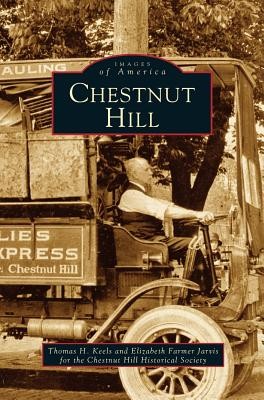
- We will send in 10–14 business days.
- Author: Thomas H Keels
- Publisher: Arcadia Publishing Library Editions
- Year: 2002
- Pages: 130
- ISBN-10: 1531606857
- ISBN-13: 9781531606855
- Format: 17 x 24.4 x 1 cm, hardcover
- Language: English
- SAVE -10% with code: EXTRA
Reviews
Description
Chestnut Hill, in northwest Philadelphia, is one of America's most beautiful urban villages thanks to the fusion of a magnificent physical setting, notable architecture, historic preservation, and careful planning. During the Colonial period, Chestnut Hill was a rough-hewn village of farmers and millers. After the railroad reached the area in 1854, Chestnut Hill's natural splendor and healthful atmosphere made it a popular spot for Philadelphia's wealthy. Soon, it was ringed by magnificent estates designed by Frank Furness, T.P. Chandler, and Horace Trumbauer. Living side-by-side with the wealthy were hardworking communities of Italian, Irish, and German immigrants. Chestnut Hill, a fascinating photographic record of Chestnut Hill's past, reveals some surprising secrets about this vibrant community. The current community center was once the site of a perpetual motion machine hoax that swindled nineteenth-century Philadelphians, and one local hotel provided liquor (and perhaps other illicit services) to Chestnut Hillers during Prohibition. The stunning photographs and riveting stories of Chestnut Hill include those of the anti-Catholic Know-Nothings, who threatened to halt the construction of Our Mother of Consolation Catholic Church in the 1850s, and of Richard Norris Williams II, who survived the sinking of the Titanic and went on to win the national tennis championship twice at the Philadelphia Cricket Club.
EXTRA 10 % discount with code: EXTRA
The promotion ends in 17d.07:33:06
The discount code is valid when purchasing from 10 €. Discounts do not stack.
- Author: Thomas H Keels
- Publisher: Arcadia Publishing Library Editions
- Year: 2002
- Pages: 130
- ISBN-10: 1531606857
- ISBN-13: 9781531606855
- Format: 17 x 24.4 x 1 cm, hardcover
- Language: English English
Chestnut Hill, in northwest Philadelphia, is one of America's most beautiful urban villages thanks to the fusion of a magnificent physical setting, notable architecture, historic preservation, and careful planning. During the Colonial period, Chestnut Hill was a rough-hewn village of farmers and millers. After the railroad reached the area in 1854, Chestnut Hill's natural splendor and healthful atmosphere made it a popular spot for Philadelphia's wealthy. Soon, it was ringed by magnificent estates designed by Frank Furness, T.P. Chandler, and Horace Trumbauer. Living side-by-side with the wealthy were hardworking communities of Italian, Irish, and German immigrants. Chestnut Hill, a fascinating photographic record of Chestnut Hill's past, reveals some surprising secrets about this vibrant community. The current community center was once the site of a perpetual motion machine hoax that swindled nineteenth-century Philadelphians, and one local hotel provided liquor (and perhaps other illicit services) to Chestnut Hillers during Prohibition. The stunning photographs and riveting stories of Chestnut Hill include those of the anti-Catholic Know-Nothings, who threatened to halt the construction of Our Mother of Consolation Catholic Church in the 1850s, and of Richard Norris Williams II, who survived the sinking of the Titanic and went on to win the national tennis championship twice at the Philadelphia Cricket Club.


Reviews